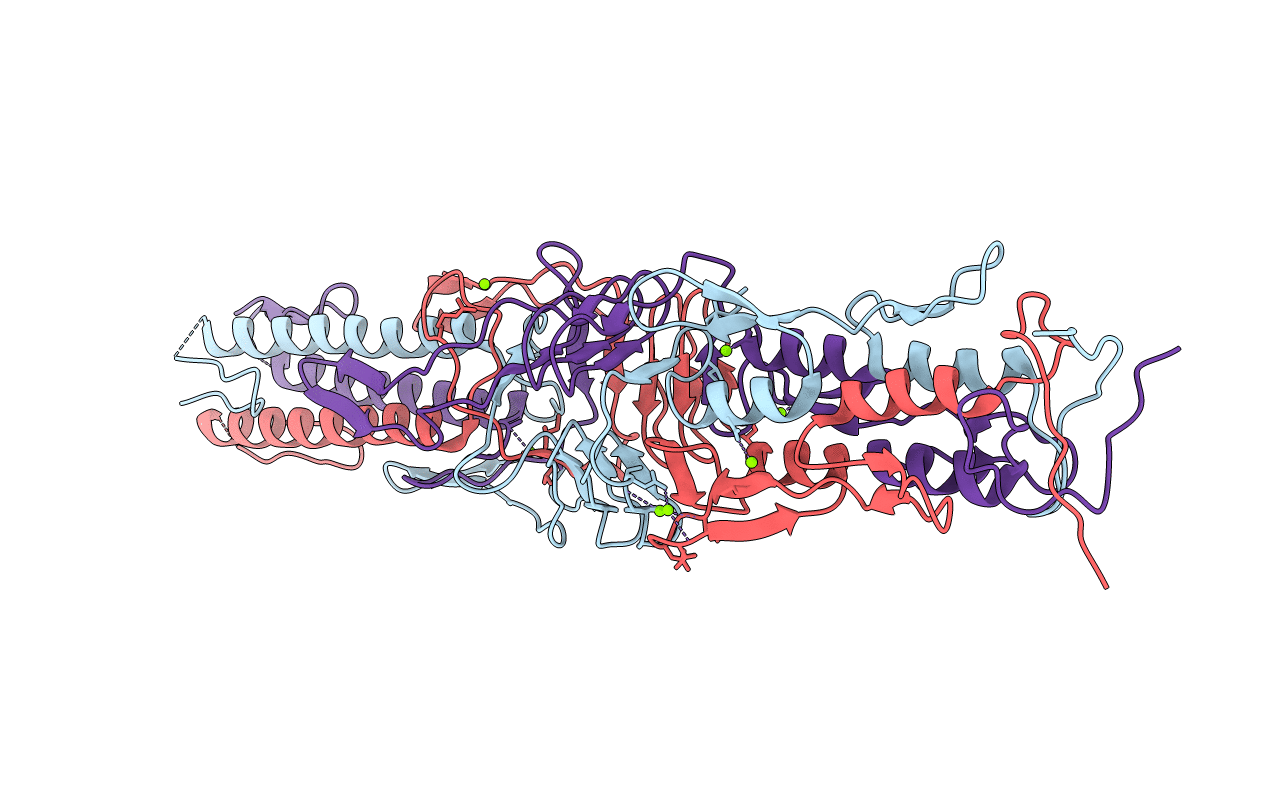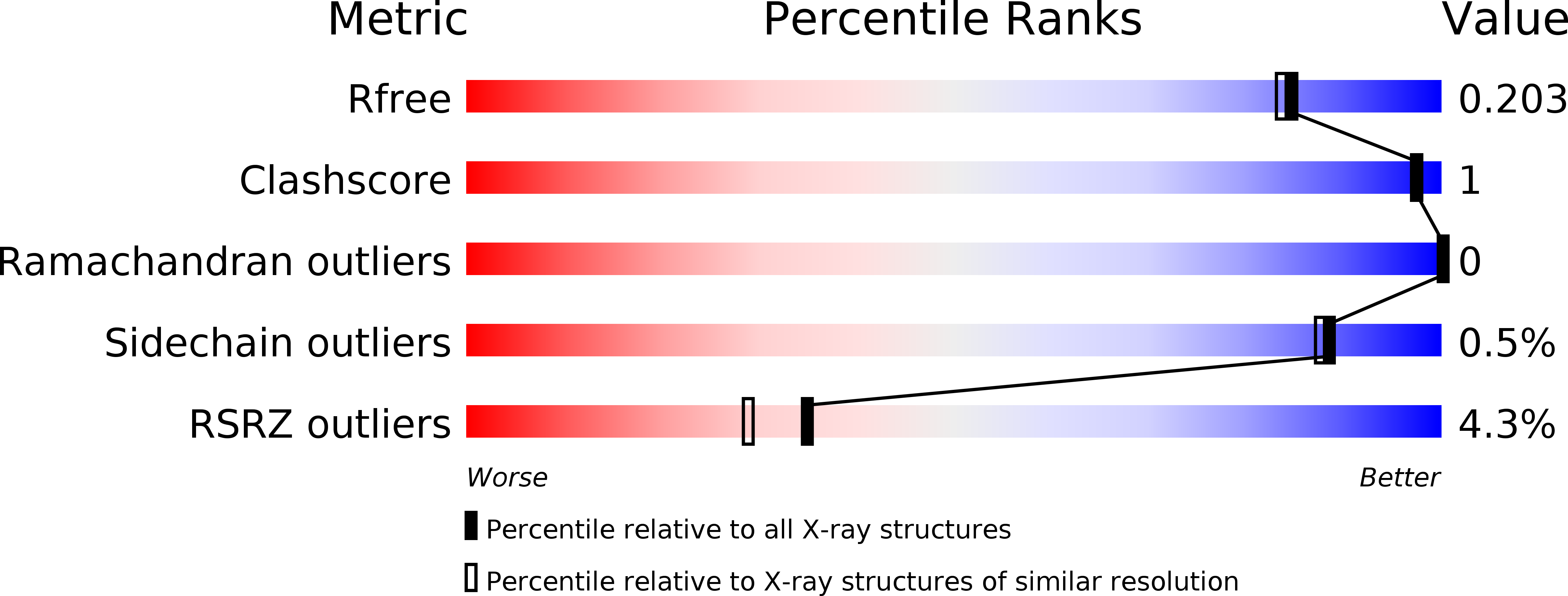
Deposition Date
2014-07-16
Release Date
2015-07-22
Last Version Date
2024-01-10
Entry Detail
PDB ID:
4USX
Keywords:
Title:
The Structure of the C-terminal YadA-like domain of BPSL2063 from Burkholderia pseudomallei
Biological Source:
Source Organism:
BURKHOLDERIA PSEUDOMALLEI K96243 (Taxon ID: 272560)
Host Organism:
Method Details:
Experimental Method:
Resolution:
1.80 Å
R-Value Free:
0.20
R-Value Work:
0.16
R-Value Observed:
0.17
Space Group:
P 1 21 1


